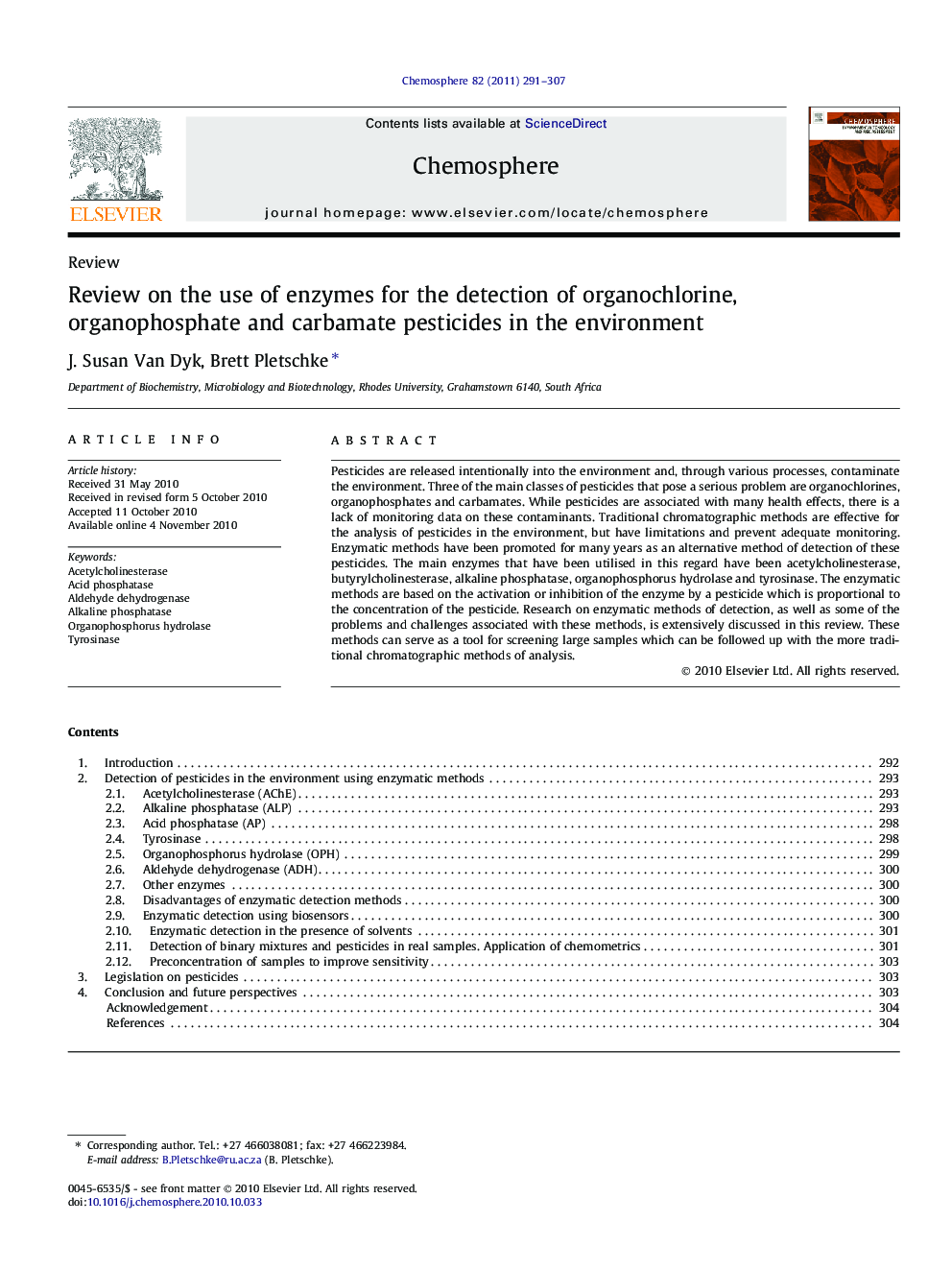| Article ID | Journal | Published Year | Pages | File Type |
|---|---|---|---|---|
| 4411029 | Chemosphere | 2011 | 17 Pages |
Pesticides are released intentionally into the environment and, through various processes, contaminate the environment. Three of the main classes of pesticides that pose a serious problem are organochlorines, organophosphates and carbamates. While pesticides are associated with many health effects, there is a lack of monitoring data on these contaminants. Traditional chromatographic methods are effective for the analysis of pesticides in the environment, but have limitations and prevent adequate monitoring. Enzymatic methods have been promoted for many years as an alternative method of detection of these pesticides. The main enzymes that have been utilised in this regard have been acetylcholinesterase, butyrylcholinesterase, alkaline phosphatase, organophosphorus hydrolase and tyrosinase. The enzymatic methods are based on the activation or inhibition of the enzyme by a pesticide which is proportional to the concentration of the pesticide. Research on enzymatic methods of detection, as well as some of the problems and challenges associated with these methods, is extensively discussed in this review. These methods can serve as a tool for screening large samples which can be followed up with the more traditional chromatographic methods of analysis.
